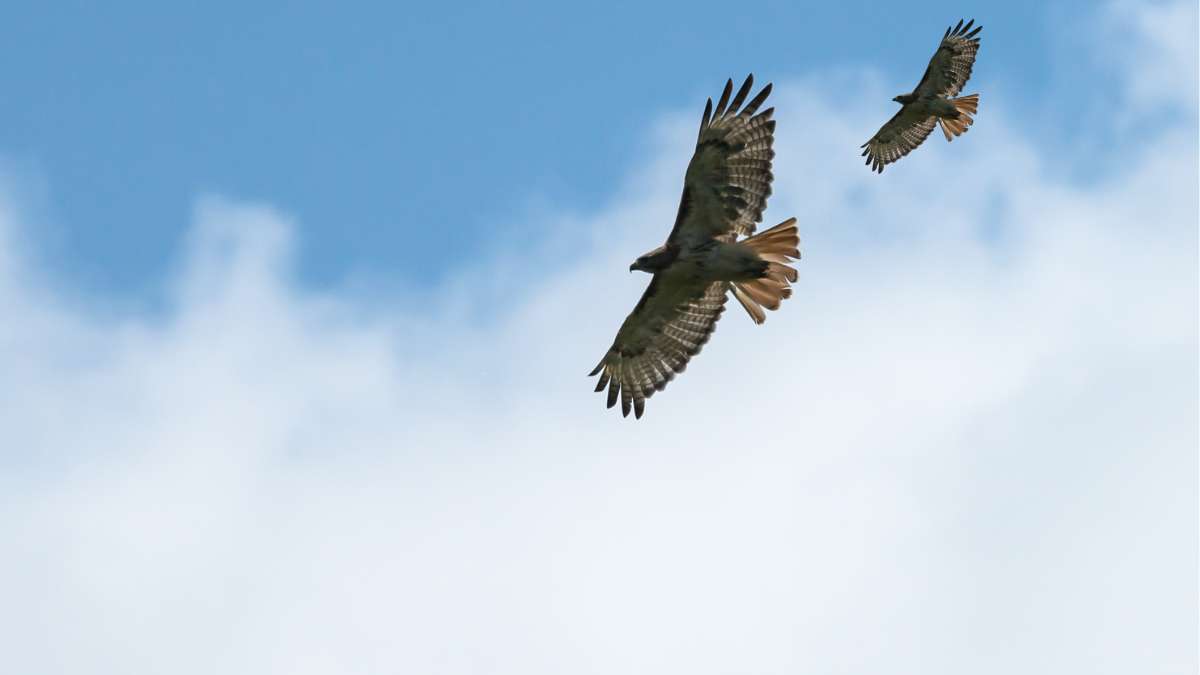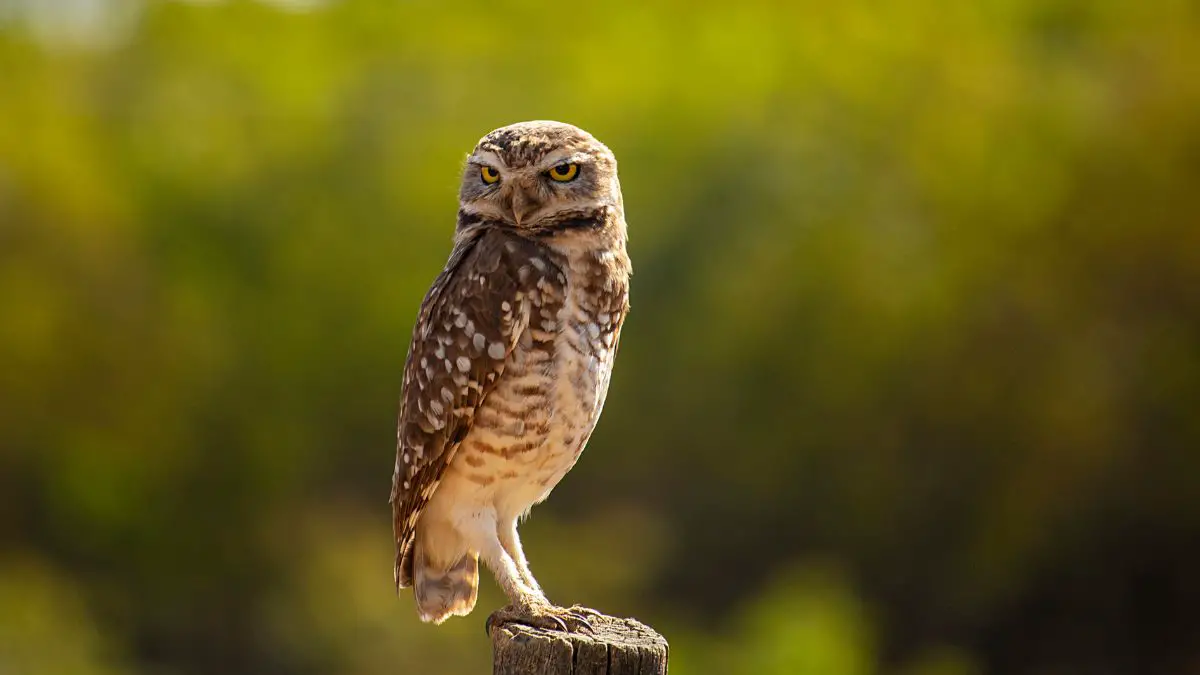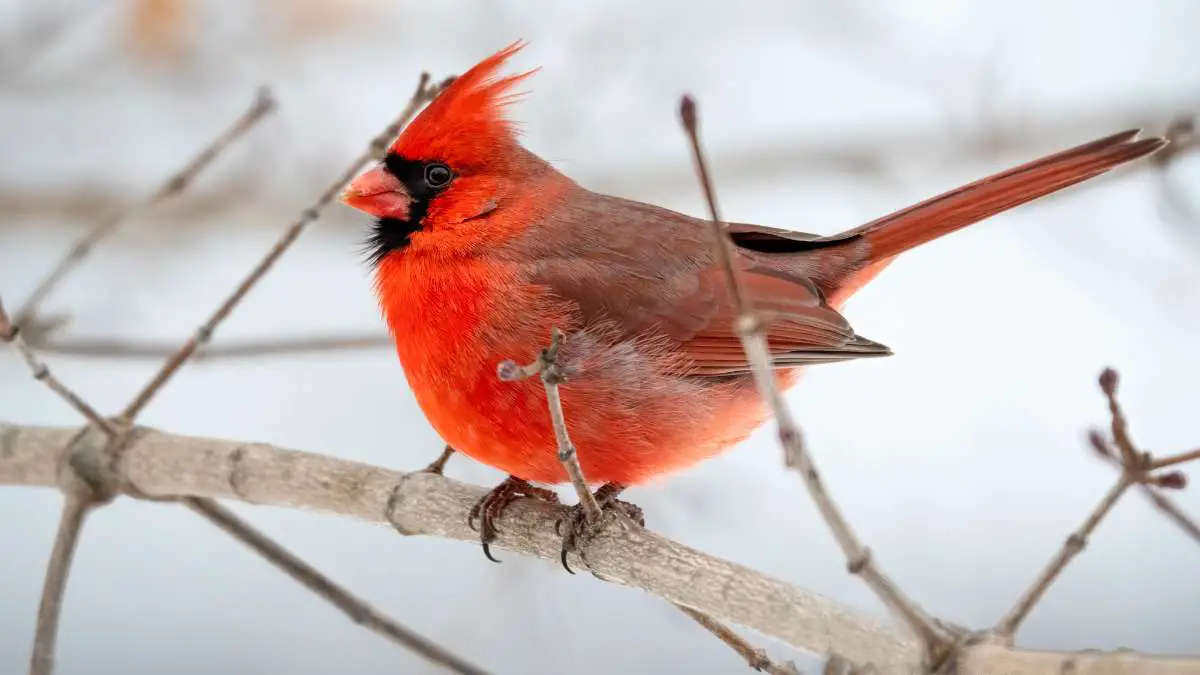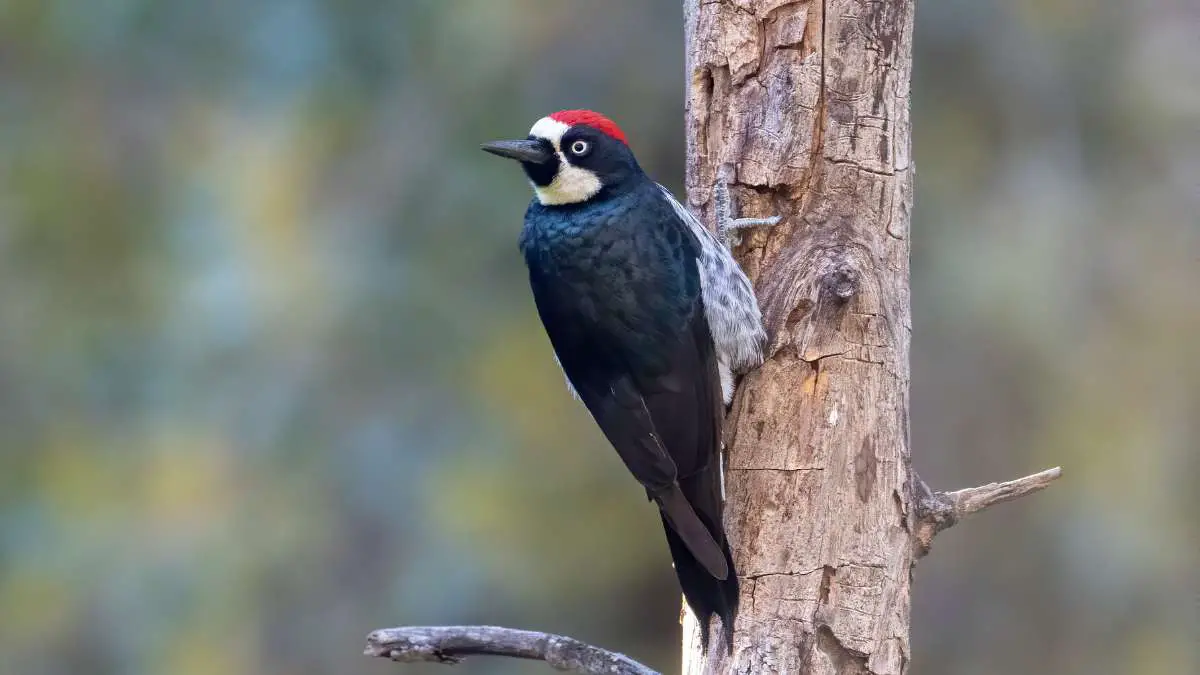Hawks usually fly solo. Hawks are known as solitary hunters, which means they prefer to hunt and fly alone.
They have sharp eyesight and strong talons, making them excellent at catching their prey on their own. However, there can be exceptions. Sometimes, you might see a group of hawks flying together.
This usually happens during migration or when there’s an abundance of food. So, while hawks are typically solitary creatures, they can come together in groups on occasion, but it’s not their usual way of flying.
Types of Hawks
Hawks come in various shapes and sizes, each with its own unique characteristics. Let’s take a closer look at some of the different types of hawks and their social behaviors.
Red-Tailed Hawk (Buteo jamaicensis):
One of the most common hawks in North America, the red-tailed hawk is known for its striking rusty-red tail feathers.
They’re solitary hunters, often seen soaring high above open fields and woodlands, on the lookout for small mammals like rodents and rabbits.

Cooper’s Hawk (Accipiter cooperii):
These hawks are sleek and agile, with long tails and short wings. Cooper’s hawks are excellent at maneuvering through dense forests and are known for their ability to catch birds mid-flight.
They typically fly solo, pursuing their feathered prey.
Ferruginous Hawk (Buteo regalis):
Found in the western parts of North America, ferruginous hawks are large and have distinctive rusty or white plumage.
They primarily hunt ground squirrels and prairie dogs, and they tend to fly alone or in small family groups during the breeding season.
Swainson’s Hawk (Buteo swainsoni):
Known for their impressive migrations, Swainson’s hawks travel long distances from North America to South America. During migration, they can be seen flying in groups, sometimes even forming massive flocks, but they typically prefer solo hunting.
Red-Shouldered Hawk (Buteo lineatus):
These hawks are recognized by their striking reddish-brown shoulders. They’re often found in dense woodlands near water and tend to be quite vocal.
While they may occasionally be seen flying with others during migration, they prefer hunting and nesting alone.
So, hawks vary in social behavior. While some, like the Swainson’s hawk, may gather in groups during migration, most hawks are solitary creatures when it comes to hunting and daily activities.
Hawk Behavior and Hunting Habits
Hawks are known for their solitary hunting behavior, and this is a key aspect of their survival strategy. They primarily hunt alone because it’s highly efficient.
Imagine you’re a hawk, and your goal is to catch a meal. Hunting solo allows hawks to be stealthy and focused on their prey without the distractions of other hawks.
These magnificent birds have evolved incredible adaptations for solo hunting. Their keen eyesight is legendary, allowing them to spot the tiniest movement on the ground, even from high above in the sky.
This remarkable vision helps them locate their prey, whether it’s a mouse scurrying through a field or a rabbit hiding in the brush.
Hawks are also equipped with powerful talons that can swiftly snatch up their quarry. When they make their move, it’s a precise and lightning-fast strike that rarely misses the mark. They rely on their sharp beaks to tear into their catch once it’s captured.
Nesting and Mating Habits
Hawks, despite their solitary hunting tendencies, exhibit intriguing social behaviors during their nesting and mating periods. When it comes to nesting and finding a mate, hawks follow a well-defined ritual.
Nesting is a crucial phase in a hawk’s life, and these birds take their homes seriously.
They typically build their nests high in trees, often using sticks and twigs to create a sturdy platform. These nests, called eyries, provide a safe place for their offspring to grow.
During the breeding season, which varies depending on the hawk species and location, hawks actively seek out mates.
Courtship rituals involve aerial displays, where potential mates perform impressive acrobatics in the sky. These displays help establish bonds between pairs and reaffirm their commitment to each other.
While hawks may come together during this season, they are not always the most sociable birds. They can be territorial when it comes to their nesting sites. Hawks fiercely defend their chosen territory, and conflicts can arise if another hawk tries to encroach.
Social Behavior in Hawks
While hawks are typically known as solitary hunters, there are instances where you might spot them flying together, which adds an intriguing layer to their social behavior.
Occasionally, you may witness a group of hawks soaring through the sky. This phenomenon is often linked to specific circumstances. One common reason for hawks to fly together is during migration.
Some hawk species, like Swainson’s hawks, undertake long journeys, and they may form temporary groups to make their migrations more efficient.
Another reason for hawks flying in proximity to each other is when there’s an abundance of food. When there’s an ample supply of prey in an area, multiple hawks may converge to take advantage of the feeding opportunities.
This transient social behavior allows them to capitalize on the available resources.
While these group sightings may occur, it’s important to note that hawks still maintain their independence. They may share the same airspace, but they continue to hunt individually, each focusing on their own targets.
Once the migratory journey is complete or the feeding opportunity diminishes, they often disperse and return to their solitary hunting habits.
Factors Influencing Group Flight
The question of whether hawks fly in groups often hinges on several influential factors, shedding light on the dynamic nature of these birds’ behavior.
Firstly, environmental conditions play a pivotal role.
Hawks may congregate when the environment offers a wealth of opportunities. Abundant prey, such as small mammals or birds, can lure them together.
Additionally, certain landscapes, like open fields or wetlands, may create conditions conducive to group flights, as they provide ample visibility and hunting grounds.
Seasonal changes also significantly impact hawk behavior. During breeding seasons, hawks may form temporary pairs, leading to more social interactions.
Conversely, when food becomes scarce during harsh winter months, hawks might gather near food sources, leading to occasional group sightings.
Migration is another critical factor. Some hawk species embark on long-distance journeys during migration.
Swainson’s hawks, for example, travel thousands of miles from North to South America. During these migrations, they often form impressive flocks, filling the sky with their presence.
Misconceptions about Hawks’ flights
There are several misconceptions and myths surrounding the idea of hawks flying in groups, and it’s essential to separate fact from fiction to better understand these magnificent birds.
One common misconception is that hawks regularly form flocks and fly together like some other bird species. In reality, hawks are predominantly solitary hunters, and group flights are the exception rather than the rule.
Misconceptions about hawks flying in groups often arise from occasional sightings of multiple hawks soaring in the same vicinity.
While they might share the same airspace, these birds typically maintain their independence, each focused on hunting their own prey.
To provide accurate information about hawk behavior, it’s crucial to emphasize that while hawks can be seen flying together on occasion, especially during migration or when food is abundant, they are not inherently social birds like geese or starlings.
Understanding these distinctions helps dispel common myths and leads to a more accurate appreciation of the solitary and occasionally communal nature of hawk behavior in the wild.
Conservation and Hawk Populations
Understanding the nuances of hawk behavior is vital for conservation efforts aimed at preserving these remarkable birds of prey. While some hawk species are thriving, others face significant threats.
Conservationists rely on a deep understanding of hawk behavior to protect their habitats effectively. By knowing where and how hawks hunt and nest, experts can implement conservation strategies that safeguard these crucial areas.
It’s essential to highlight the plight of threatened or endangered hawk species.
Birds like the Ridgway’s Hawk (Buteo ridgwayi) a critically endangered bird in the Dominican Republic or the vulnerable Galapagos Hawk (Buteo galapagoensis) face dire challenges, including habitat loss and environmental changes.
In such cases, understanding their behavior is critical to identifying the best ways to protect and rehabilitate these species.
Human impact plays a substantial role in hawk populations. Urban development, deforestation, and pollution can disrupt hawk habitats and food sources.
This underscores the importance of promoting responsible land use and environmental stewardship to ensure these magnificent birds continue to grace our skies.
Observing Hawks in the Wild
For birdwatchers and nature enthusiasts, spotting hawks in their natural habitat can be a thrilling experience. And also photographing a hawk in flight is super challenging.
Here are some simple tips to enhance your chances of observing these magnificent birds up close.
- Know Their Habits: Understanding hawk behavior is key. Hawks often prefer open areas with good visibility, like fields or grasslands, as they hunt for prey. Look for elevated perches, like trees or power poles, where they might survey their surroundings.
- Invest in Binoculars: Good-quality binoculars can make a world of difference. They help you get a closer look at hawks without disturbing their natural behavior. Opt for binoculars with a comfortable grip and clear optics.
- Timing Matters: Hawks are most active during the daytime, especially in the morning and late afternoon. Plan your outings accordingly to increase your chances of spotting them in action.
- Study Field Guides: Familiarize yourself with field guides specific to your region. These guides provide valuable information about the types of hawks in your area, their habitats, and distinctive features.
- Be Patient and Quiet: Patience is key when observing wildlife. Hawks can be skittish, so avoid sudden movements and loud noises. Find a comfortable spot, settle in, and wait quietly for their presence.
- Ethical Observing: Respect their space and avoid getting too close. Do not disturb nests or nesting areas, as this can harm hawk populations. Always prioritize the welfare of the birds and their environment.
Conclusion
In conclusion, understanding hawk behavior is a fascinating journey into the world of these magnificent birds.
While hawks are primarily solitary hunters, occasional group flights and social interactions add depth to their behavior.
It’s crucial to recognize the uniqueness of each hawk species and their vital roles in our ecosystems.
As we continue to learn more about these majestic birds, let’s foster a greater appreciation for their presence in our natural world and support ongoing research to protect their habitats and populations.




